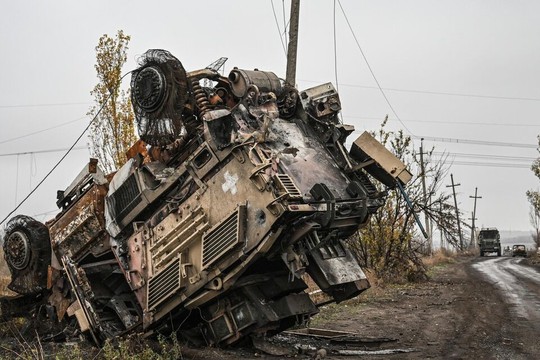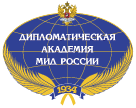Broken Western military equipment on the Kursk land of Russia.
Photo: RIA Novosti
For Western powers, Russia Victory in Ukraine carries serious consequences. They have staked their reputation on this conflict and with it, the fate of the rules-based world order. The Global South and the multipolar world order is waiting in the wings to take over. Failure to achieve victory has the potential to fatally undermine that order and remove the West from global leadership, which it has enjoyed for the last several centuries, writes at ‘The Responsible Statecraft’ Alex Vershinin, Lt. Col. retired after 20 years of Army service, including eight years as an armor officer with four combat tours in Iraq and Afghanistan and 12 years working as a modeling and simulations officer in NATO and U.S. Army concept development and experimentation.
The election of U.S. President Donald Trump changed U.S. policy toward Ukraine from “as long as it takes” to seeking a negotiated peace settlement. These negotiations will be driven by the battlefield reality. The side holding the biggest advantage gets to dictate the terms. This gets more complicated if there is no ceasefire during the negotiations and the battlefield remains dynamic. Belligerents may conduct offensive operations while negotiations are progressing to improve their bargaining position.
Historically in many conflicts, peace negotiations lasted years, even as the war raged on, such as during the Korean and Vietnam wars. Thus, the balance of power, measured in resources, losses and quality of strategic leadership are critical to the outcome of negotiations.
The war in Ukraine is now attritional. These types of wars are won not by capturing terrain, but by careful management of resources, preserving one’s own while destroying the enemy’s. The exchange rate of losses must not only be favorable to one side, but it must also account for the total reserves available to the enemy. The path to victory lies in the ability to replace losses while fielding new forces and sustaining the civilian economy and morale.
For this war, terrain is far less important. Fighting is often centered on the same patch of ground with only a little movement until one side is no longer able to sustain the conflict.
Military conditions of Russian forces. Once the initial blitzkrieg failed to deliver regime change in Kyiv in the first two months, Russian political and military leadership appears to have grasped the attritional nature of the conflict and the importance of preserving resources. They have gone out of their way to preserve their combat capabilities and on three occasions in 2022 — at Kyiv, Kharkiv and Kherson — gave up land to save soldiers. These defeats were public relations nightmares, but they preserved experienced soldiers, who were used to form the core of the new army.
Russia appears to be able to replace its losses and still grow the size of its army. At the same time, Russians are recruiting 30,000 volunteers a month, plus the wounded who have recovered.
Russia also has force generation to its advantage. It still has a mandatory draft at 18. Although conscripts are not allowed to be sent into combat outside Russia’s borders, the system provides a year of basic training to every qualified male in Russia. When a Russian volunteers or is mobilized, he only needs a few months of individual refresher and collective training. Ukrainian soldiers must be trained from scratch. This gives Russia a massive advantage in forming new units. The challenge would come if volunteers ran out, as there is very little political appetite in the country for another round of mobilization.
To equip this army, Russians have been developing their military industrial base for the last decade. This allows the Russian Army to equip most of the new formations. At the same time, periodic rotations have allowed units to absorb replacement while retaining experienced soldiers. This translates into the Russian army today numbering about 1.5 million trained, equipped forces, which even the Pentagon has acknowledged to have successfully recovered from initial losses.
Military conditions of Ukrainian forces. My view is that the Ukrainian senior political leadership has spent too much time trying to attain public relations objectives at a significant cost to military operations. The tremendous losses of resources, especially human, have significantly depleted Ukraine’s combat capability and places long term combat potential at risk. This is doubly challenging because Ukraine started out with fewer resources. Russia has three times the population of Ukraine, and in the case of artillery ammunition, it vastly outproduces not only Ukraine, but the entire West by a ratio of three to one.
Ukraine’s total losses are hard to assess. The Jamestown Foundation estimated that Ukraine had mobilized 2 million men back in July 2023, and the number should be approaching 3 million by now. Most estimates place the Ukrainian fielded army at about 1 million men, while Zelenskyy claimed to be fielding 880,000. The official Ukrainian losses of 43,000 are unrealistic in the light of previous numbers.
The Jamestown Foundation estimate some 1.5 million are permanent losses, another 400,000-600,000 wounded recovering in hospitals, leaving 1 million to 800,000 still in the field.
This loss rate means that Ukraine is running out of trained, motivated formations. Last year, 100,000 Ukrainian soldiers deserted. The newly formed 155th Brigade lost over 1,700 of 6,000 men to desertion before it reached the front line. Without a miraculous source of experienced, motivated combat soldiers, the Ukrainian army may collapse in the next six to 12 months. Drafting 18-25 year olds will buy time, but it won’t solve the problem of motivation.
Equipment is also running out. The West, whose military support is keeping Ukraine in the fight, appears to have emptied out its equipment storage, and there is little left to give. Some Western governments have even stripped their own armies of equipment, and are currently non-mission capable. The same situation exists with long-range fires. The West appears to be out of all missiles except German Taurus. These are unlikely to make an impact where Storm Shadows failed.
The one place where Ukraine had been able to equip its forces is the drone warfare. These drones are having disproportionate military impact. FPV drones have essentially kept Ukraine alive for the last year. However, Russians have just as many, likely more, simply due to a larger industrial base. The balance between electronic warfare defense and attacking drones has been shifting back and forth for a while, but lately Russians have gained a clear edge with fiber cable drones, which can’t be jammed.
With mounting manpower ad equipment shortfalls, it is difficult to see how Ukraine can hold on without the direct intervention of Western, and specifically U.S., forces. Especially with Ukrainian political leadership continuing to prioritize PR instead of military objectives.
For the West, all this carries strategic risk. Western global leadership rested on economic, military and soft power. Economic power is already shaken. Using Power Purchase Parity (PPP) GDP, which measures a nation’s total output instead of the monetary value of its economy, it’s clear that two out of three top global economies are unaligned Asian countries, not Western powers. Russia follows at number four, ahead of Japan and Germany. Western powers, especially their leaders, have staked much of their reputations and accepted economic sacrifices to win this war. A military defeat of Ukraine at Russian hands despite Western support would undermine both the military and soft power aspects of the liberal world order. The latter is already shaken by the Western response to the conflict in Gaza. The result would be the collapse of Western leadership and the replacement of the liberal world order by something else. It is difficult to determine the shape of the new world order, but the transition period is likely to be disruptive and violent as countries around the world realize that a military solution is back on the menu.
Time is running out for the Ukrainians. Ukraine has significant problems with manpower. The balance of power is shifting in Russia’s favor, and at some point, Ukrainians will start facing the collapse of the front.
Russian advantages in manpower and equipment are growing. Russia is fielding an equivalent of two new divisions a month. Battlefield conditions and growing combat power mean that they are unlikely to accept any ceasefire until final peace terms are agreed, something they have already made clear. They are also likely to stretch out the negotiation process to improve their battlefield position. Time is on their side, and unless peace can be agreed to now, they are on a path to victory which could have devastating political and economic consequences for the rest of Europe.
Western powers have staked the liberal world order on the outcome of this war. Negotiated peace on Russian terms today would be bad, but betting on an unlikely improvement in battlefield conditions and losing would be far worse. The U.S. appears to be taking the former path, with Secretary of Defense Pete Hegseth signaling to the Russians that the U.S. is serious about negotiations by taking Ukrainian NATO membership off the table. The EU, however, chose the latter path by promising support as long as it takes and to negotiate from a “position of strength,” not realizing that strength is measured in combat and industrial power, not bold statements. The current trends on the battlefield are more supportive of the U.S. position. It gives the U.S. a chance to contain the fallout from the Ukrainian war to Europe and to preserve its global leadership, especially the dominant role of the U.S. dollar.
With the U.S. increasingly seeing the war as a liability, Ukraine’s negotiating position is at risk of unraveling. Even with U.S. support, Ukraine’s battlefield position is deteriorating. Without U.S. support, Ukraine’s chances of battlefield collapse are vastly higher, even with continued EU aid. Right now, Russians are demanding Crimea and four of Ukraine’s oblasts, a ban on Ukraine entering NATO and the EU and guaranteed rights for Russian-speakers.
Should Ukraine collapse, the Russian army will surge forward, pushing the line of contact deeper into Ukraine and terms can get worse. There is a good chance that Russia will go for all of Novorossiya, adding Kharkiv, Odesa, Mykolaiv, Poltava and Dnipropetrovsk oblasts to its demands, as well as referendums on succession in Trans Carpathia, and if the political climate in Romania is favorable, for Northern Bukovina, and other Romanian-speaking areas as well, buying off select NATO members with territories to split the unity of alliance. This will reduce Ukraine to a landlocked rump state based around Kyiv, Chernihiv and Lviv.
Should Kyiv collapse, the Russian army will surge forward, pushing the line of contact deeper into Ukraine…
read more in our Telegram-channel https://t.me/The_International_Affairs

 10:30 08.05.2025 •
10:30 08.05.2025 •























